#book destruction
Text
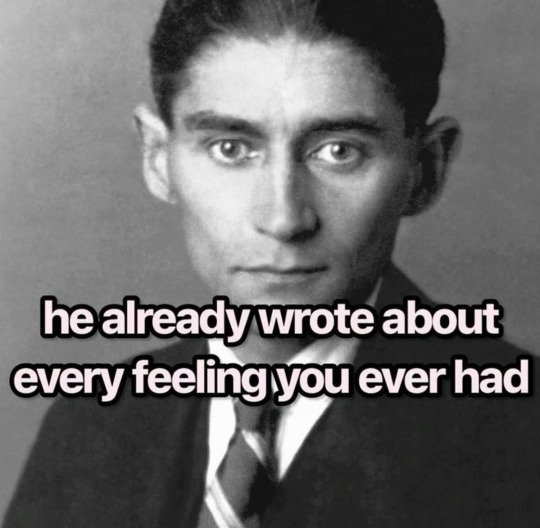
#franz kafka#metamorphosis#the metaphors#books and reading#just girls being girls#just girly thoughts#just girly things#just girly posts#the feminine urge#the female experience#the feminine mystique#girl blogger#girlblogging#girl interrupted#female hysteria#the female urge#female manipulator#divine feminine#female experience#self destruction#insecurity#self image#books#old books#tumblr girls#gaslight gatekeep girlboss#girls girls girls#obsessive thinking#i wanna be pretty#im just a girl
12K notes
·
View notes
Text
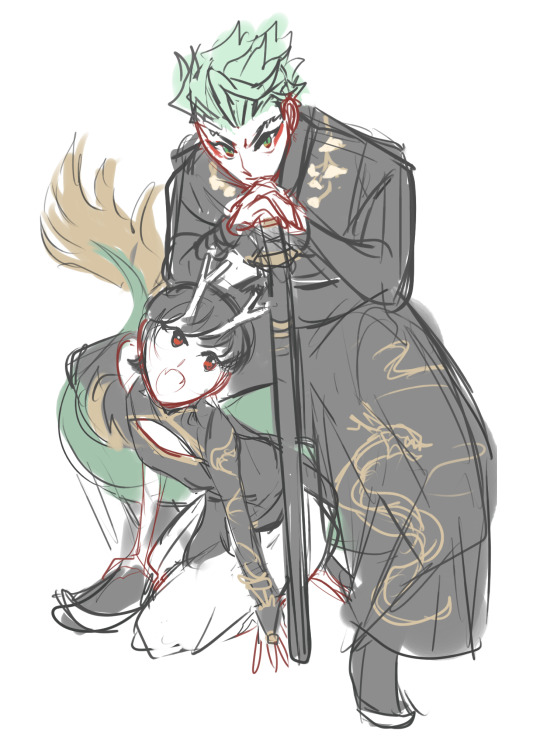
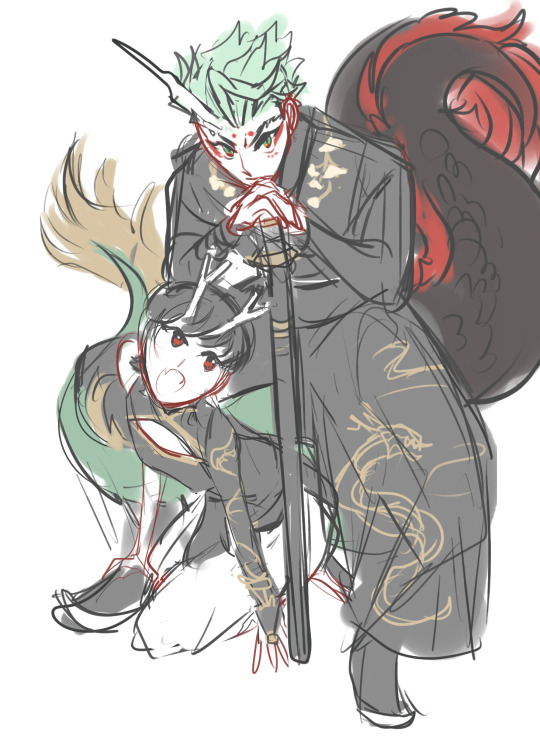
eepy 🐲



ryumimi & half dragon sebek AU
#twisted wonderland#twst#sebek zigvolt#twst yuu#twst mc#malleus draconia#dragon is ryu in japanese#this turns into au#fanart#instead of being too weak he is now afraid of being too powerful and destructive#malleus is so plain without the horns#somehow i imagine s ilver is still a human#now he is called a monster for being too powerful instead of being pointed at for being too weak#hm to imagine maybe his mother fled not long after his birth bcs it would be too dangerous for her to stay at the human village#and so no one really teaches him how to control his power#maybe he only reads from books his grandfather somehow have about dragons
1K notes
·
View notes
Note
new chapter 7 installment dropped how we feelin????
YOU DON'T UNDERSTAND
THAT'S HIS DAD
#twisted wonderland#twisted wonderland spoilers#twisted wonderland episode 7 spoilers#twisted wonderland episode 7 part 6 spoilers#twisted wonderland book 7 spoilers#twisted wonderland book 7 part 6 spoilers#BABY DRAGON BABY DRAGON BABY DRAGON#i will take three thank you#god. lilia really has no idea how incredibly loved he is huh.#meleanor: (dies to protect him and her son)#malleus: (is literally born having a huge destructive tantrum because he wants lilia back)#silver: (bases his entire life and personality around how much he loves his dad)#lilia: wow i just can't understand why everyone is so upset about me dying#(somehow sebek ended up being the most normal about him and there's the most unexpected part)#man i really gotta redo lilia's um poster. i wasn't super happy with it to begin with but now there's like. fun shapes and context!#me: ha ha why is his magic called that. that's so weird.#me later: o-oh. oh i see.#SPEAKING OF SEBEK THOUGH there he is! THERE HE IS!#i was so afraid the armor was going to be a bad thing but NO he earned it!#he shook out his hair and turned out to have been beautiful all along!#episode 7 is about two things and two things only: dads and significant hair moments#and also speaking of dads!#i am taking lilia mistaking malleus for revaan based on his voice#as one more tick in the 'if crowley is revaan then there's going to have to be a really good explanation' column#the dulcet tones of dire crowley...#on the other hand if crowley tears off his mask and immediately starts sounding like malleus that would be THE funniest way to do it#auuuggghhhhh it's only been out for hours and already i'm like next part when#we've been cliffhanger'd again lads#idia finally came back to us and they were like 'please wait for the next release :)'#ortho did...did you somehow hack your way into silver's dream palace
1K notes
·
View notes
Text
The Scholar
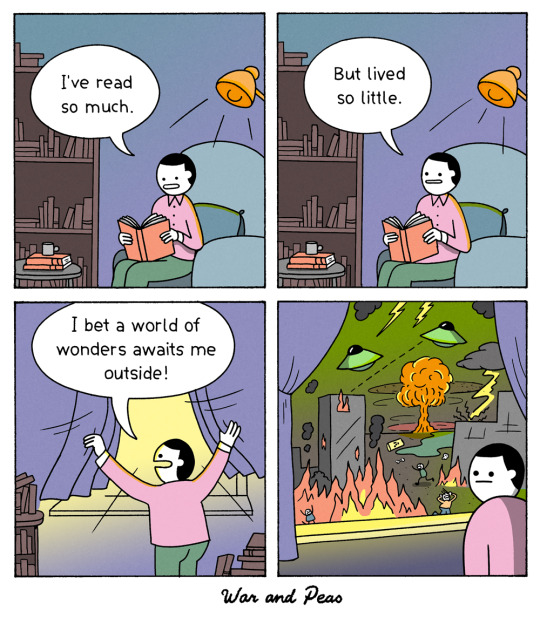
View On WordPress
#aliens#atom bomb#attack#books#chaos#comic#destruction#funny#humor#lol#panic#reader#reading#scholar#war and peas#webcomic
4K notes
·
View notes
Text
The Tragedy of Season 2: they’re so busy trying to protect each other that neither of them actually communicates anything at all


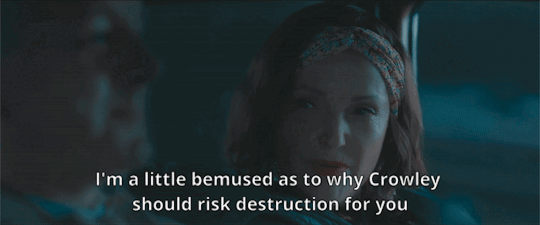

#erased from the book of life#and destruction#and yet neither of them tells the other a THING#The Final Fifteen was doomed from the start#good omens#good omens 2#good omens s2#good omens season 2#aziraphale#crowley#ineffable husbands#angel#demon#armageddidnt-pain#armageddidnt-blog
1K notes
·
View notes
Text

Friedrich Nietzsche
#friedrich nietzsche#quotes#dark academia#light academia#book quotes#chaotic academia#classic academia#classic literature#poetry#self destruction
18K notes
·
View notes
Text



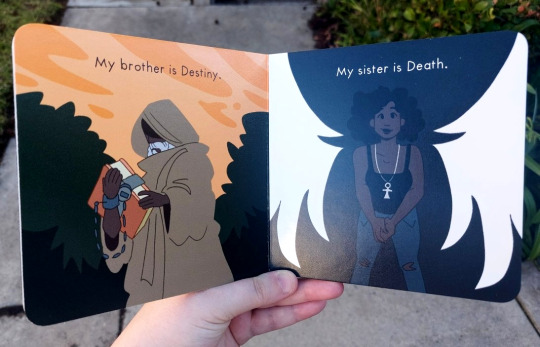

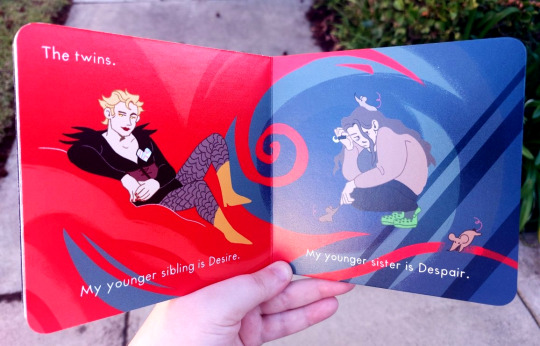


i'm excited to show dream's board book for To Be Brand New by @dsudis for @the-centennial-husbands-bigbang (dream's helm lenses are made with reflective paper! so irl you can look at yourself on the page)
link to the high rez illustrations
#my art#fishfingersandscarves#the sandman#the sandman netflix#big band#the centennial husbands big bang#dreamling#fic rec#illustration#book cover#printing#dream of the endless#dream (the sandman)#dsudis#desire of the endless#death of the endless#despair of the endless#delirium of the endless#destruction of the endless#night (the sandman)#time (the sandman)#destiny of the endless#destiny (the sandman)#death (the sandman)#delirium (the sandman)#desire (the sandman)#despair (the sandman)#destruction (the sandman)
526 notes
·
View notes
Text

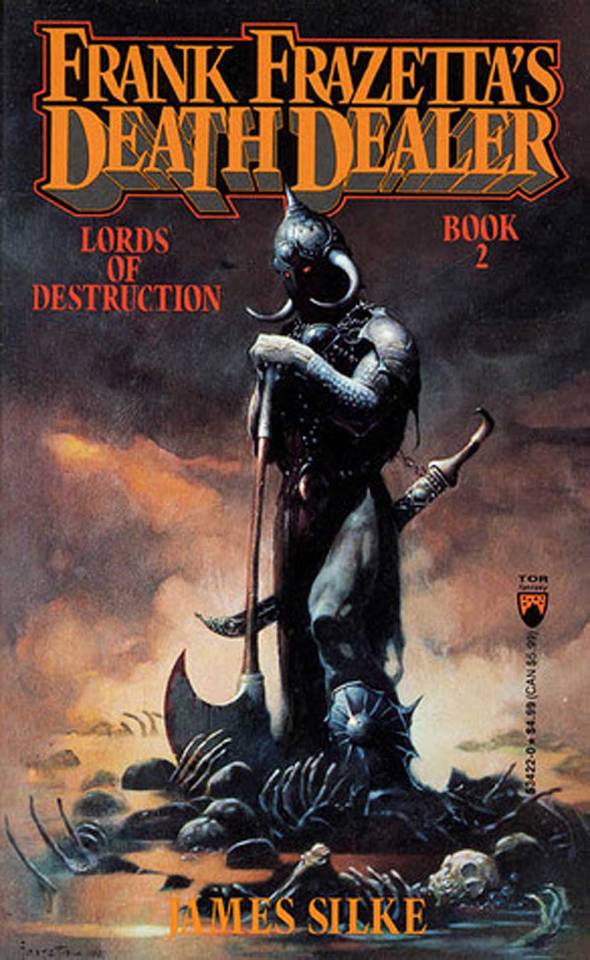
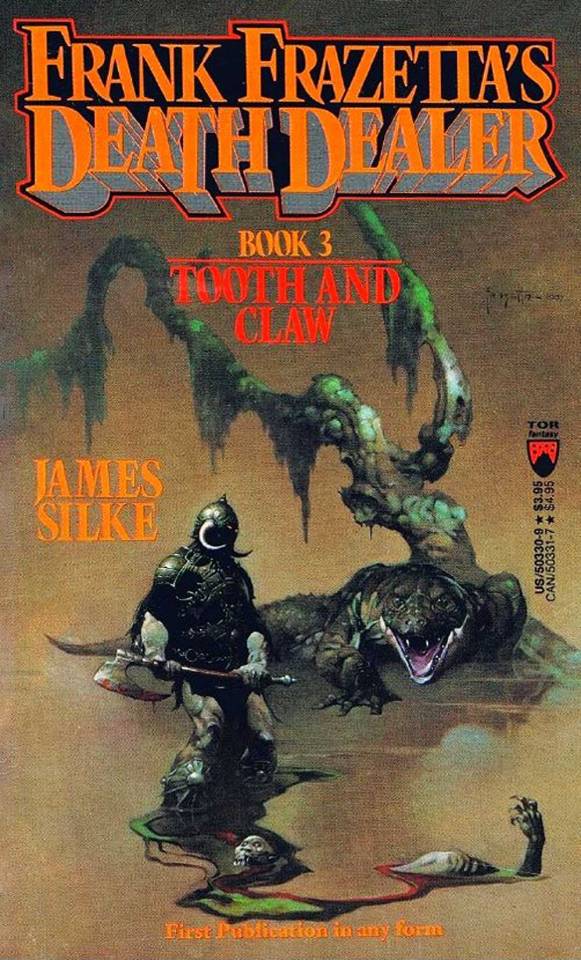

Frank Frazetta's Death Dealer novels by James Silke, Tor Books
Prisoner of the Horned Helmet (1988)
Lords of Destruction (1989)
Tooth and Claw (1989)
Plague of Knives (1990)
#Frazetta#Frank Frazetta#Death Dealer#James Silke#fantasy#fantasy art#1980s#Tor Books#@torbooks#fantasy novels#horned helmet#battle axe#sword & sorcery#Prisoner of the Horned Helmet#Lords of Destruction#Tooth and Claw#Plague of Knives
435 notes
·
View notes
Text
Ok I know we all like to joke about how the Battle of the Five Armies is only a page long in The Hobbit but like. Sometimes I think about how what if Tolkien wrote it that way because he didn’t want his kids to hear about war.
#like the hobbit was supposed to be a bedtime story for his kids#and Tolkien fought in an actual war like he was on the front lines#and obviously it impacted him heavily enough to write a whole trilogy of anti-war books#but this was a story originally meant for his children to hear#so what if he left out the battle of the five armies because he didn’t want his kids to hear about it#but still left in the sad aftermath because he at the very least wanted them to know how destructive war is#I dunno I could be wrong#but sometimes I think about that#the hobbit#lord of the rings#jrr tolkien#j r r tolkien#the silmarillion#tolkien legendarium#tolkien
411 notes
·
View notes
Text
A guide for reading The Sandman: Part 2
So... You have read the full Sandman series. You went from issue 1 to issue 75. From beginning to end. You had all the ten volumes. Congrats!
But I am sorry to tell you, you don’t actually have the full Sandman story. You see, Neil Gaiman wrote and created much more than just the numbered issues. He created a lot of side-stories, side volumes and “specials” whose presence are either exciting and thrilling additions to the Sandman mythos, or key elements needed to understand the plots and happenings of the main story. Don’t get me wrong, if you just read the numbered issues you’ll get the full story without problem. But you’ll still be missing the second part of the complete Sandman world. The “specials”. In French we have a clever word for that: the “hors-séries” (literally means “outside of the series”, it is still part of the world but not inside the numbered series).
Given there is a lot of those specials, I’ll classify them by “publishing order”. You’ll get what I mean.
I) The Sandman library
After being released as a series of numbered issues, The Sandman was collected in the ten volumes I described previously. Out of these volumes, one included actually more than just the numbered issues: volume 6, “Fables and Reflections”, added two Sandman specials.
# “Fear of Falling” was originally a story published as its own for a one-shot issue called “Vertigo Preview” whose function, as the name indicates, was to serve as a big preview for most of the Vertigo titles. As a result, the issue contains previews and half-stories for most of the Vertigo titles: Hellblazer, Doom Patrol, Swamp Thing, Shade the Changing Man... It also includes previews for two specials I will talk about later, Death: The High Cost of Living, and Sandman Mystery Theater. But these are all just previews. There is only one full, complete story, which is precisely “Fear of Falling”, conceived originally as a way to give a taste of Sandman to newcomers.
# The Song of Orpheus. Originally it was published as its own as “The Sandman Special”, but it was included into this first collection of Sandman issues due to how important the story is : for you see, it gives the complete backstory of Orpheus, who is an important character in The Sandman. And while just a retelling of the myth, it is still very precious to understand the full impact of the character.
II) The 30th anniversary edition
After publishing those ten volumes, DC celebrated the 30th birthday of The Sandman by reprinting them... WITH FOUR BONUS VOLUMES!!!
# The first added Volume, Volume 11, is called “Endless Nights”. This specific volume was originally published as its own under the name “The Sandman: Endless Nights”. Published in 2003, so long after the end of The Sandman, it is a set of seven stories, each centered around a different Endless sibling, and their whole purpose is just to further expand the world of The Sandman, and flesh out more the other Endlesses by showing stories from THEIR perspectives. It is technically an “anthology volume / expansion volume” that is not needed to understand the full story, but makes a nice addition to better understand the scope of the world and the working of the Endless. It does however contains spoilers for “Brief Lives” and further, so... it is at its right place as “Volume 11″.
# The second added Volume is NOT called Volume 12 as you would expect. It is rather called... Volume ∞. Of its full name: The Sandman: Overture. This volume was originally a six-part limited series created by Neil Gaiman in 2013 (so LONG after the end of The Sandman, and well after Endless Nights). This is the latest and final work by Neil Gaiman in The Sandman world so far, and it was designed as a sort of “grand finale”. Some people will tell you “It is the first work in chronological order so you should begin here”. DO NOT DARE! THESE PEOPLE ARE LYING TO YOU! Beginning here is the WORST idea you can have. If you want to begin The Sandman, you begin at issue 1, like Neil Gaiman himself.
For you see, “Overture” is a dual story, two series of events tied together that happen, one after the end of The Sandman (so after issue 75) and the other before the beginning of the Sandman (so before issue 1). Overture is both the prologue to The Sandman AND its epilogue. Beginning and end, alpha and omega... Hence the ∞ symbol. It is without a doubt the best way to end the series.
# The two other volumes are both unumbered and called “The Sandman: The Dream Hunters”. And they both tell the same story. So why are there two volumes? Because one is an illustrated novel, and the other is a full comic book issue.
Originally, Neil Gaiman published “The Dream Hunters” as a novel/novella in 1999 (so three years after the end of The Sandman, but before the publication of Endless Nights). It was a fictional story he invented, based upon and inspired by Japanese folklore and Japanese fairytales. Illustrated by Yoshitaka Amano, it takes place in The Sandman world, though it is not part of the main plot and you can actually read the story with no prior knowledge of The Sandman. It became so popular that for the 20th anniversary of The Sandman, in 2008-2009, the novel was adapted into a comic book, a four part mini-series that became its own Sandman volume.
Fun fact: when Neil Gaiman published the story, he wrote in it a fake “origin” claiming he was just adaptating a part of Ozaki’s famous “Old Japanese Fairy Tales”. It was a lie, as Neil Gaiman had entirely invented the story, but it fooled a lot of people who sincerely believed it was some sort of secret or missing story from Ozaki’s book. (He notably had to clear up the matter in “Endless Nights”).
III) The Absolute Sandman
Now you probably think: wow... this is a lot. But I got everything, right? NO YOU FOOL! DC, seeing the enormous success of The Sandman, decided to reprint a new edition of the compilation: The Absolute Sandman, even bigger than the 30th Anniversary edition. Not ten or twelve volumes, but rather six (five numbered volumes plus Overture), containing everything I talked about above (The Sandman Special, Endless Nights, Overture, The Dream Hunters...). Plus more specials not yet included in compilations! Resulting in five volumes + The Absolute Sandman: Overture + one special volume called “The Absolute Death”.
# The Vertigo: Winter’s Edge comics. Vertigo’s Winter Edge was a limited series published from 1998 to 2000 celebrating, every winter, the different lines and series of the Vertigo imprint with special stories. It ran for three issues, and each of them has one story created by Neil Gaiman tied with or part of The Sandman universe. One will maybe ring familiar to the viewers of the show: “A Winter’s Tale”, published in the second issue (1999). This story is actually a description of Death’s backstory, answering many questions about her “life” before the events of The Sandman (and also revealing answers to some questions raised in “Endless Nights”, even though it was published AFTER this story). Parts of it were adapted in the first season of The Sandman tv show.
The other two stories of Winter’s Edge are “The Flowers of Romance”, from Winter Edge 1998 and “How They Met Themselves” from Winter Edge 2000. These stories are fascinating because they actually depict Desire as the protagonist and “hero”. You see, as Gaiman points out, Desire plays an antagonistic role in The Sandman merely because Dream is the protagonist. But here he decided, why not show the reverse, the world where Desire is the protagonist, the “nice” side of Desire: the result are those two stories.
[ The Vertigo: Winter’s Edge issues also contain stories belonging to “The Dreaming”, a spin-off of The Sandman, but given Neil Gaiman was not involved in those I’ll keep it for a later post]
# “The Castle”. This story was originally published in “Vertigo Jam”, which is basically quite similar to “Vertigo Preview” and “Vertigo: Winter Edge”, just a one-shot issue that was an anthology of various stories, each taking place in a different series of the Vertigo imprint.
# The Death mini-series. In 1993, the same year as The Dream Hunters, Neil Gaiman wrote a mini-series with Death as the main protagonist. It was called “Death: The High Cost of Living”. This Death-centered story had three years later a “twin mini-series”: “Death: The Time of Your Life” in 1996 (coupled with the return of Hazel and Foxglove from “A Game of You”). These two were then gathered here as a duo in a special volume of The Absolute Sandman called “The Absolute Death” and centered around, you guessed it, lot of Death material.
# The “educational” Sandman. This “Absolute Death” volume also contains two “PSA material” or “Very Special Episode” issues. One is a story centered around Destruction and called “The Wheel”, which was originally part of a very special DC volume: 9-11: The world’s finest comic book writers and artists tell stories to remember. You can safely guess what the story is about. The second story is not actually a story, but a Death-centered AIDs pamphlet called “Death Talks About Life”. It had been originally coupled with several other issues of DC comics: it was found in the issue 32 of “Shade the Changing Man” (the 1990 series) ; it was also found in the 62nd issue of Hellblazer, and finally in the 46th issue of The Sandman. But it also existed as its own, unique pamphlet distributed in schools to raise awareness of HIV and AIDS.
# Sandman Midnight Theater. The last of the specials created by Neil Gaiman, and one of the last pieces to The Sandman puzzle. Long story short... There were several “Sandman” super-heroes in the DC Universe. In fact, Neil Gaiman began “The Sandman” as his own personal take on the several Sandmen super-heroes of the DC world. The very first of those Sandmen was Wesley Dodds, a Batman-like vigilante of the 30s that was part of the Golden Age of comics. In fact, Wesley Dodds himself appears in the first issue of Neil Gaiman’s The Sandman, and is part of The Sandman universe. After the end of Neil Gaiman’s series, the popularity of Wesley Dodds increased again and so in 1993 was launched a “reboot” of the original adventures of the Sandman, a new series around Dodds called “Sandman Mystery Theater”.
Sandman Midnight Theater is precisely a crossover issue between Sandman Mystery Theater and Neil Gaiman’s The Sandman.
# “The Last Sandman Story”. This is actually not a comic book story. It was a prose story, semi-autobiographical, written by Neil Gaiman for “Dustcovers: The Collected Sandman Covers”, which as the name says compiled all of the covers of Dave McKean (plus I think he also illustrated this specific story?). It a sort of confession story, a text by Neil Gaiman about real-life and his relationship with The Sandman series and the character of Dream. And, as the name says, it was written to be released at the conclusion of the main series, post-issue 75.
There you go! These are all the specials created by Neil Gaiman and that are part of the canon and official Sandman series. Of course there is more bonus to talk about: Neil Gaiman gave a lot of interviews about The Sandman in which he reveals all sorts of details and secrets, and they can be found across various books - the Sandman Companion, the Absolute Sandman editions, the Omnibus Sandman editions, there’s plenty of places to look at.
So... is it done? Is it over?
Yes and no. With this, you have covered everything in The Sandman world made by Neil Gaiman. So this is basically all the “canon”.
But The Sandman created a lot of spin-offs and side-stories that were not created or that are not linked to Neil Gaiman... as with many comic book worlds, it expanded beyond its original creator. So maybe I will cover all the non-Neil Gaiman Sandman stories in a third part. Maybe. If I have time.
#sandman#the sandman#comic books#comic book#comics#reading guide#neil gaiman#specials#dream of the endless#death of the endless#desire of the endless#destruction of the endless
5K notes
·
View notes
Text
People who shut their eyes to reality simply invite their own destruction, and anyone who insists on remaining in a state of innocence long after that innocence is dead turns himself into a monster.
James Baldwin
#james baldwin#baldwin#quotes#philosophy#wisdom#life#literature#writer#books#psychology#write#art#artist#idea#ideas#destruction
227 notes
·
View notes
Text
Chainsaw Man is about self-destruction. It’s about self-destruction as a means of reclaiming your autonomy in an environment where you are consistently denied it. Chainsaw Man is about denial of autonomy.
Chainsaw Man is about how, when you are in an environment where you are denied your own autonomy, you learn to view interpersonal relationships as interactions you have no control over unless you find a means of controlling the other members of that relationship — whether that be through methods of fight, flight, freeze, or fawn.
Chainsaw Man is about how denial of autonomy is framed as love. Chainsaw Man is about how love that denies autonomy is violence.
#chainsaw man#csm#csm part 1#csm part 2#guess who just read the new chapter#going to write a ‘society of the spectacle’ type book except it’s just exploring the themes in csm#I love repetition#my csm thoughts#my csm analysis#meposting#autonomy#self-destruction#seeing Denji consistently turn his saws on himself in part 2 hurts ough#maladaptive coping mechanisms yk#destroy yourself to destroy those who hurt you#when I wish he was able to take care of himself in spite#but the situation he’s in.. doesn’t rly allow him to do that#csm denji#csm 152
187 notes
·
View notes
Text
a minor detail from the nereid in this scene had me wondering...


who is 'us'?
since it's a nereid speaking, are we to assume the nereid is speaking on behalf of all sea life, of atlantis? by extension, does this mean that the ocean has always been aware of percy?
i mean, at least in part that's a given- in the books, poseidon had cyclops checking in on percy. posiedon really isn't making much of an attempt to keep percy a secret, at least not from his own people/subjects.
it felt like a very interesting addition, this implication the sea is looking out for percy, cares for him in what is suggested to be an equal capacity to that of poseidon- the nereid is quick to make this comparison
already, we're having an emphasis on how poseidon claims to care for percy- which contrasts several other gods we've seen thus far (*cough*athena*cough*), and now we're also getting the suggestion that this sentiment for percy is shared by others of the ocean's domain.
there's always been a shared sense of belonging for percy when it comes to the water- at camp, when he meets the naiads he describes it as feeling like seeing long-lost family, over the books it's suggested percy spends a lot of time helping out sea life with their problems (including getting stuck in traps), and when we see atlantis we understand there's whole other civilisations that exist- with their own politics and bonds. atlantis is no different, an entire species of people, a whole ecosystem and political environment- a society. one that already expresses lament for not being able to involve themselves in percy's life until this point, or interact at all.
percy goes from having his mother, and struggling to ever find a place he belongs, to the possibility there's a whole other civilisation he may belong to, who care for him. imagine how conflicting that will feel.
#especially with the destruction of atlantis at oceanus' hands to come by book 5#ohhh and when percy asks poseidon to help with typhon which would leave atlantis vulnerable#i just know percy carried so much misplaced guilt for that even though it was the right (and only) call#but i'm getting ahead of my OG point now whoops#percy jackson#pjo#poseidon#anyway i found this interesting and didn't want to shut up about it as i don't know the meaning of the phrase
143 notes
·
View notes
Text
I think many people conceptualize manhood as destruction and womanhood as creation in such a way that transition has been really wild to parse my experiences and how they fit.
I am simultaneously creating the self and destroying the self in such a way that people don't... know how to react sometimes. I've really noticed this as I've given less and less care as to what I present myself as, because now, I am truly only concerned with myself rather than my perception. Once I got over the bioessentialist idea that to be a man was to destroy, and I can't create because that's only for women (or, for those forced to create), I started caring much less.
I think that's interesting, is all
#trans#transgender#lgbt#lgbtq#ftm#mtf#nonbinary#bioessentialism#i think it's no coincidence that it is now that i am getting into fiber arts#i am creating whilst being a man and that is what it means to be human<3#i think that's why people were shitting their pants recently about a research paper/book on woman and female hunters#because hunting as an act of destruction? OBVIOUSLY for men 🙄 (sarcasm)
188 notes
·
View notes
Text


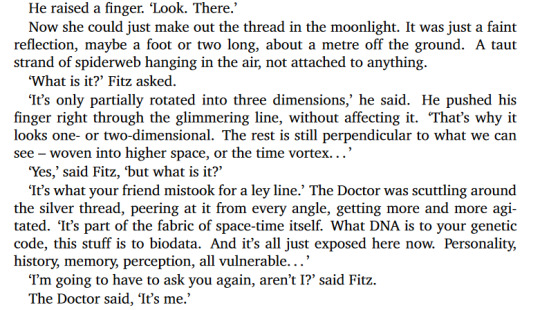
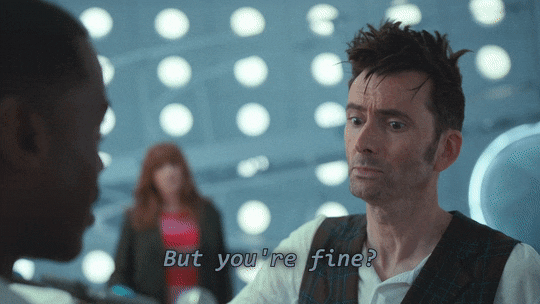
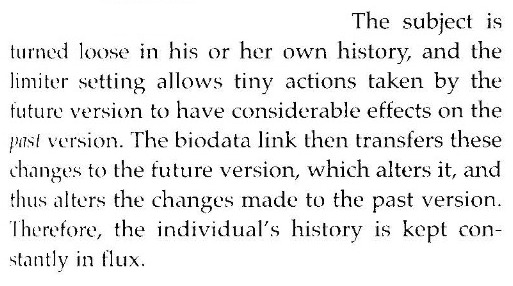


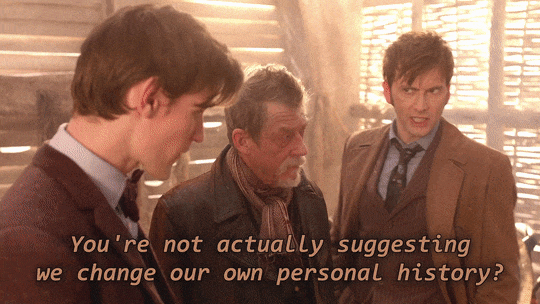




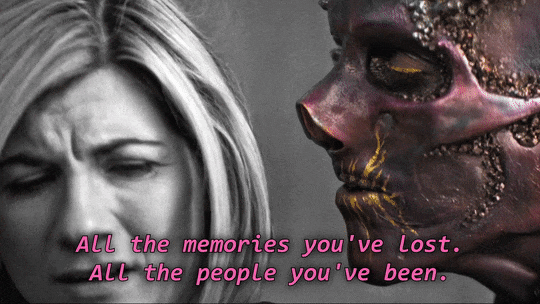

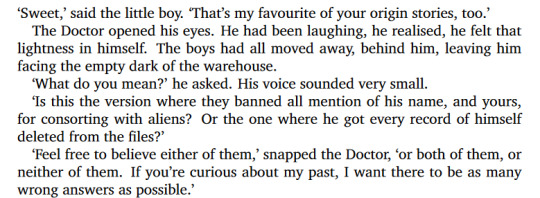


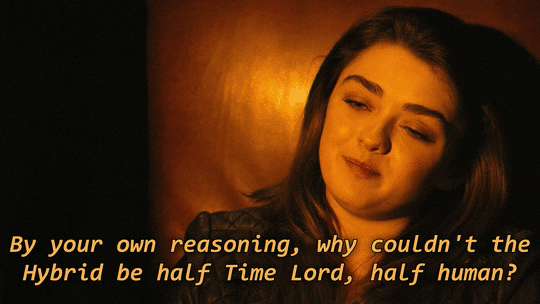
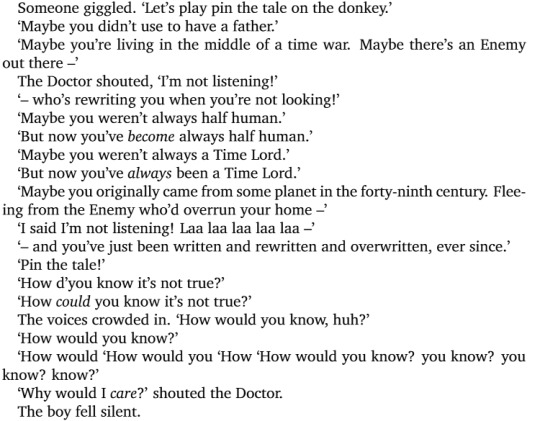
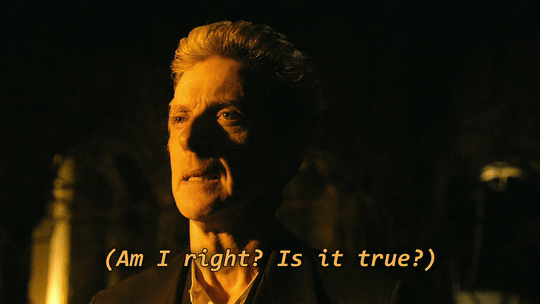




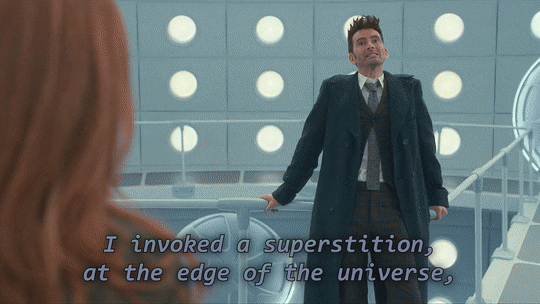
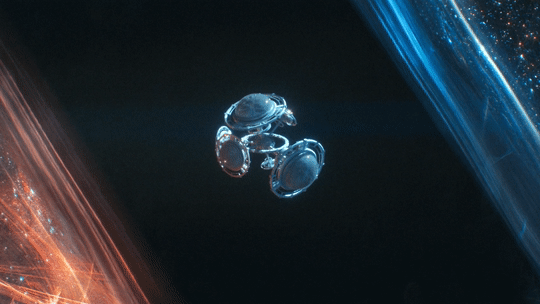
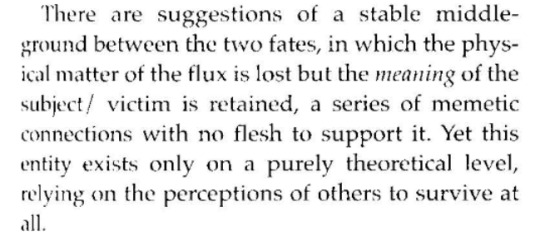
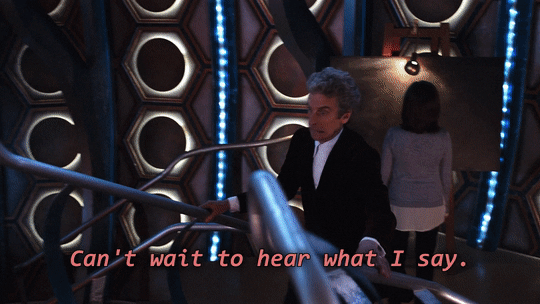


FLUXES [Celestis: Engineered Participants / Technologies]
Example: "DOCTOR, The"
[Image description, courtesy of @quailfence: a series of pictures of text, alternated with screencaps and gifs from Doctor Who.
1: Text: Fluxes: [Celestis: Engineered Participants/Technology] Individuals transposed backwards in time but not too far in space, using a very high chaotic limiter setting and tied to their home period by a thread of biodata
2: The Eleventh Doctor stands in the future corpse of his TARDIS, looking and a pulsing stream of light that has replaced the console. He says, "That is the scar tissue of my journey through the universe. My path through time and space."
3: Text: He raised a finger. 'Look. There.
Now she could just make out the thread in the moonlight. It was just a faint reflection, maybe a foot or two long, about a metre off the ground. A taut strand of spiderweb hanging in the air, not attached to anything.
'What is it?' Fitz asked.
'It's only partially rotated into three dimensions,' he said. He pushed his finger right through the glimmering line, without affecting it. 'That's why it looks one- or two-dimensional. The rest is still perpendicular to what we can see - woven into higher space, or the time vortex…'
'Yes,' said Fitz, 'but what is it?' 'It's what your friend mistook for a ley line.' The Doctor was scuttling around the silver thread, peering at it from every angle, getting more and more agitated. 'It's part of the fabric of space-time itself. What DNA is to your genetic code, this stuff is to biodata. And it's all just exposed here now. Personality, history, memory, perception, all vulnerable…'
'I'm going to have to ask you again, aren't I?' said Fitz.
The Doctor said, 'It's me.'
4: The Fourteenth and Fifteenth doctors in the TARDIS. 14: "But you're fine?" 15: "I'm fine, because you fixed yourself. We're Time Lords, we're doing rehab out of order."
5: Text: The subject is turned loose in his or her own history, and the limiter setting allows tiny actions taken by the future version to have considerable effects on the past version. The biodata link then transfers these changes to the future version, which alters it, and thus alters the changes made to the past version. Therefore, the individual's history is kept constantly in flux.
6: The Fugitive Doctor says, "Let me take it from the top: Hello, I'm the Doctor."
7: Text: Let me finish. Think back to that time when you went to see your previous selves.
8: Ten, Eleven, and War talk to each other. Ten: "You're not actually suggesting that we change our own personal history?" Eleven: "We change history all the time. I'm suggesting far worse."
9: Text: 'Maybe there's no one home on Gallifrey,' said the boy softly. There was just the one of him.
The Doctor looked at him, cupping the small white cube in his hands. The boy said, Maybe they all left. Or maybe the whole planet's being destroyed, and undestroyed, and destroyed, and you just caught them at the wrong moment.
10: The TARDIS by the ruins of Gallifrey
11: Text: 'It's impossible,' said the Doctor. 'It's impossible for my people. Our past is unreachable. What's written can't be unwritten.'
'Who said your history can't change?'
Another boy answered, 'Someone from his history.'
And another: 'Maybe it's the second-biggest lie in Time Lord history.'
12: Dhawan!Master tells Thirteen, "You are the Timeless Child."
13: Thitreen stares at a ruined house. Swarm whispers in her ear and tells her, "All the memories you've lost, all the people you've been. It's all in there, contained within that house."
14: Text: And it was like the Doctor's home. As if his ship understood the loss of the House and had compensated to fill the emptiness. Shadowy corridors, alcoves and stairways, a secret at every turn. Like being in the Doctor's head. Like his life, for that matter, the details of which were strewn like flotsam across the floor.
15: Text: 'Sweet,' said the little boy. 'That's my favourite of your origin stories, too.'
The Doctor opened his eyes. He had been laughing, he realised, he felt that lightness in himself. The boys had all moved away, behind him, leaving him facing the empty dark of the warehouse.
'What do you mean?' he asked. His voice sounded very small.
'Is this the version where they banned all mention of his name, and yours, for consorting with aliens? Or the one where he got every record of himself deleted from the files?'
'Feel free to believe either of them,' snapped the Doctor, 'or both of them, or neither of them. If you're curious about my past, I want there to be as many wrong answers as possible.'
16: The Eighth Doctor tells someone, "I'm half human. On my mother's side."
17: Text: 'Well he's a hybrid, you know that. A Gallifreyan not born of Gallifreyan, the one who unites the two races and brings good old human niceness into their alien society. Aliens need that, y'know.'
'A human hybrid? She saw the contempt in his curling lip. 'Pseudoscientific nonsense. There's no evidence,' he repeated.
'He's allowed to be different. He's got a prophecy and everything.'
18: Lady Me says, "By your own reasoning, why couldn't the Hybrid be half Time Lord, half human?"
19: Text: Someone giggled. 'Let's play pin the tale on the donkey.'
'Maybe you didn't use to have a father.'
'Maybe you're living in the middle of a time war. Maybe there's an Enemy out there -'
The Doctor shouted, 'I'm not listening!'
'- who's rewriting you when you're not looking!'
'Maybe you weren't always half human.'
'But now you've become always half human.' 'Maybe you weren't always a Time Lord.'
But now you've always been a Time Lord.'
'Maybe you originally came from some planet in the forty-ninth century. Fleeing from the Enemy who'd overrun your home -'
'I said I'm not listening! Laa laa laa laa laa -'
'- and you've just been written and rewritten and overwritten, ever since.'
'Pin the tale!'
'How d'you know it's not true?'
'How could you know it's not true?'
The voices crowded in. 'How would you know, huh?'
'How would you know?'
'How would 'How would you 'How 'How would you know? you know? you know? know?'
'Why would I care?' shouted the Doctor.
The boy fell silent.
20: Lady Me asks, "Am I right? Is it true?" Twelve replies, "Does it matter?"
21: Text: However, the one group from the Homeworld which has excelled at flux-engineering is the Celestis.
22: Two asks the Time Lords, "Now then… what about me?"
23: Tecteun tells Thirteen, "Which is ehy we engineered the Fluyx: Shut the universe down and you within it."
24: Text: Even Mictlan itself can be considered a kind of enormous flux, an endlessly-shifting realm so cortosive to the rest of history that its heartland has to be kept on the outer skin of the universe
24: The Fourteenth Doctor tells Donna, "I invoked a supersition, at the edge of the universe, where the walls are thin and everything is possible."
25: The space station from Wild Blue Yonder
26: Text: There are suggestions of a stable middle-ground between the two fates, in which the physical matter of the flux is lost but the meaning of the subject/ victim is retained, a series of memetic connections with no flesh to support it. Yet this entity exists only on a purely theoretical level, relying on the perceptions of others to survive at all.
27: The Twelfth Doctor walks up to the TARDIS console. He says, "Can't wait to hear what I say." Glancing at the viewer, he adds, "I'm noting without an audience."
28: Text: You know what Sam represents. If a tree falls in a forest and no one's there to hear it, does it make a sound? Stop me if I'm getting too abstract here, but if a Time Lord saves the world and nobody witnesses him doing it, does history care? She's your witness. The thing you need to make you whole.
29: The First Doctor looks at the viewer and says, "Incidentally, a Happy Christmas to all of you at home!" End description.]
[Plain text: Fluxes [Celestis: Engineered Participants / Technologies] Example: "Doctor, The". End plain text.]
@dw-described
#Doctor Who#DW Meta#DW Theory#First Doctor#Second Doctor#Eighth Doctor#Tenth Doctor#Eleventh Doctor#Twelfth Doctor#Thirteenth Doctor#Fourteenth Doctor#Fifteenth Doctor#Martin!Doctor#Tecteun#The Division#The Flux#Faction Paradox#Doctor Who EU#The Book of the War#Unnatural History#just some random thoughts#linking together some of the parallels and headcanons over the years into a chain#actually was spurred by me thinking about the 'destruction of the universe' line in Class and connecting it to the Flux#but had to cut it#as well as a lot more#due to the 30 image limit#so consider also the Solitract; the Great Old Ones from the previous universe; the Doctor as a 'virus'; “once upon several times” etc.#DW Spoilers#Doctor Who Spoilers#for Tennant and Gatwa together
215 notes
·
View notes
Text

Hellboy Seed of Destruction 1 Cover by Mike Mignola
106 notes
·
View notes